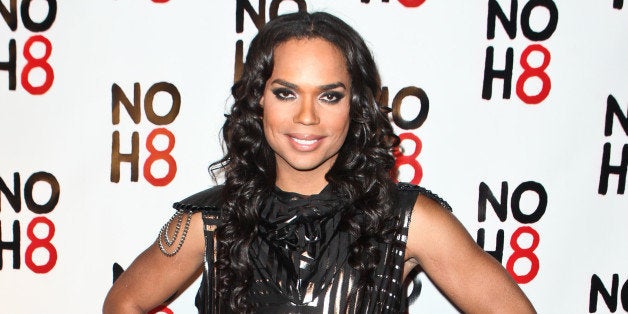
These are exciting days of turmoil in the trans community, with fundamental issues of identity, often just fodder for academia and social media, rising to public view. The question of just exactly who is trans is becoming more complicated and bringing to the fore a complementary question of who is gay.
This is not a new phenomenon. Such questions have arisen for ethnic minorities, both within, with respect to self-policing of tribal boundaries, and without, as the majority culture tries to limit access to power by defining "other" with respect to specific subcommunities. For the gay community the question is now bubbling up: Is being gay solely a function of sexual orientation, or, because persons are "born gay," is the gender variation evident in most "protogay" children evidence of a more fundamental aspect of identity? Given the growing body of law protecting trans and gender-nonconforming persons under Title VII and the 14th Amendment, it would make sense for gay persons to shift their self-definitions from their partner choices to a more basic gendered set of attributes.
Another analogue for a similar set of community dynamics comes from Jewish experience. I've studied the debate over who is a Jew for most of my life, and that debate, which began in earnest in the modern world during the Enlightenment with Voltaire, Marx and others but has had murderous consequences as well as positive community attempts at self-definition, provides some useful lessons to the gay and trans communities today.
The lesson I've learned is that the internal and external debates may overlap, but they have different implications in their respective spheres. In today's relatively libertarian America, Jewish communities still police their boundaries, deciding, either based on tradition or religious law (halacha), who qualifies as an acceptable member. Depending on the degree of orthodoxy, there are still active debates about matrilineal vs. patrilineal descent and the inclusion of women, sexual minorities, and, most controversially, persons of other faiths. Who qualifies as a convert, and what laws are used for conversion? For the American culture at large, though, it is of little import, because Jewish identity is of minor consequence today in accessing power or simply living one's life. Accommodations made to religious belief have become normalized, and American law allows the various Jewish communities to manage their own traditions and to discriminate amongst themselves as they see fit.
For the trans community the problems are more acute, because our freedoms and protections are much more fragile, and general social acceptance is still far away. So all our internal debates about qualifications and representation have a much more immediate and significant impact on people's lives and require a sensitivity to a more general reality about which religious communities need no longer be concerned.
"Transgender" has developed over the past two decades as an umbrella to cover any and all gender-nonconforming persons who choose to be covered. Those whom most outsiders recognize as transgender are persons who have always felt that their sex assignment at birth was incorrect and then at some point in their lives act to correct that mistake. That group used to be classified by the medical profession as "transsexual." Because they legally as well as physically and socially transcend gender boundaries, they've been in greatest need of legal means to expedite that transition. As a result they've been politically active for the past 20 years and have made great strides.
But that umbrella has always been a home to others who've chosen to participate, often causing discomfort underneath the umbrella but generally not popping out into general consciousness. A large subgroup has been male cross dressers, heterosexual men who dress in a female manner on occasion but do not change their identification or the gendered expression of their lives. The National Transgender Discrimination Survey showed that half of them would transition if their circumstances allowed, so that half would fall into the transsexual category. The other half consider themselves cisgender and simply expresses their feminine nature on occasion. They have much less need for legal or political support.
I've always thought that gay male drag queens, who were seen by society as classic trans persons because their theatrically cross-gendered behavior was generally the only example of cross-gender behavior ever experienced by most Americans, fit under the umbrella. Very few ever chose to do so, until recently. They had no desire to socially, legally or physically cross that gender boundary in any permanent sense and, not being women, saw no value in joining us under the umbrella. They fought for their rights within the gay community. But note, in reference to the earlier discussion, that they are often seen as trans because of their gender expression, which lumps them in with other trans persons in the public's perception, while their sexual orientation usually remains hidden from public view. As a result, there have been many instances of resentment in the trans community when gay groups have done drag shows, particularly when they do so to ostensibly raise awareness for the trans community. At times like that the differences between subgroups become far more powerful than the similarities. Recently B. Scott, an openly feminine gay man, identified as trans as part of a lawsuit against Viacom. This caused an uproar in the trans community because he had been adamantly opposed to being seen as trans for years. Now, as a "two-spirit," he is claiming membership. Maybe his desires are heartfelt, or maybe trans is simply chic enough these days, or he simply sees our new trans legal protections as a means to win a lawsuit. I don't know, but clearly, as a gender-nonconforming gay man, or as a self-identified "two spirit" man, he qualifies by the generally accepted definition.
The main issue for the traditional trans community is that by being public and claiming membership as trans, persons such as B. Scott, or the recent detransitioners who made the news, muddy the public perception and make political action more difficult. The public is unaware just how hard it is to transition and then live successfully in a reassigned gender role, so those who publicly undo their gender transition, even though few in number, cast a pall over the efforts of those who struggle and succeed, and make them seem less worthy of their rights. The public is unaware of the subcommunities under the umbrella and therefore conflate them all. Some wonder why, if some trans persons don't need surgery, others should have it covered by health insurance or government programs. Or they wonder when exactly a person "becomes" a woman or a man, and how sex-segregated facilities should be managed. There are answers to all those questions, but they don't fit into sound bites. The blurring of the edges of a rigidly binary-gendered society is causing anxiety and raising issues of basic sexuality in the minds of many who have never considered these issues as applicable or relevant to themselves.
Once again, the experience of Jewish communities throughout history, and particularly today in America, is very instructive. Within the Jewish community there is a myriad of differences, and that diversity is healthy and productive and is managed within the community itself. Different religious and communal traditions are brought to bear, and life evolves. Membership is open to all willing to qualify, and it comes with a multi-millennial history, dues and responsibilities. The greater society, by virtue of many decades of exposure to the assimilating Jewish populace, with the resultant fading away of prejudice and discomfort, sits back and watches Jewish communal life grow as a free and equal part of American society. The larger society will watch the same unfolding in the sexual minority communities, and ultimately we'll all be the better for it.
